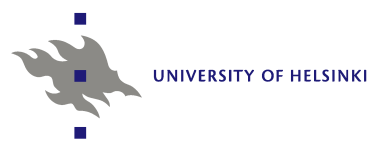University of Helsinki
(Helsingin Yliopisto)
Finland
Shortname: UH
Description of the organization
The University of Helsinki, established in 1640, is the largest and the most versatile university
in Finland. Department of Chemistry is one of the five departments of the Faculty of Science. Department of Chemistry has nine units: laboratories of organic, analytical, polymer, physical, inorganic and radiochemistry, laboratory for teaching in Swedish, teacher education unit and chemical weapons verification unit. The number of chemistry students is 800, staff number 250 and the number of professors 16. Laboratory of Radiochemistry (LR) is the only general radiochemistry unit within the Finnish universities. With the thirty members, including thirteen doctoral students, the LR is one of largest academic radiochemistry units in Europe.
In the teaching staff there is one professor and two senior lecturers. In addition, there are about twenty senior scientist and graduate students, most of who also participate in teaching. The yearly budget of the laboratory is 2.3 M€ of which three fourths come from external sources, such as EU, nuclear industry, Ministry of Employment and the Economy, Academy of Finland and the Finnish Technology Development Centre.
Main tasks attributed / previous experience related to those tasks
There are 4 major research fields in the LR. Largest research areas are related to final disposal
of spent nuclear fuel from nuclear power plants in bedrock repositories; migration and retention
of radionuclides in the geosphere are being studied. Another research area is focusing
on purification on nuclear waste effluents. Also, environmental radioactivity (radioecology) and radiopharmaceutical chemistry major research fields in the laboratory. LR offers a full master’s program which includes several mandatory courses (Principles of radioactivity and radiochemistry, Radiation safety, Detection and measurement of radiation, Chemistry and analysis of radionuclides), master’s thesis project and final exam. 8 optional courses are also offered (Environmental radioactivity, Chemistry of the nuclear fuel cycle, Radiopharmaceutical chemistry, Atmospheric radioactivity, Radiation chemistry and others). 8 of all these courses include laboratory exercises. Every year, 4-5 master’s degrees and 1-2 doctoral degrees are awarded. Due to the development of nuclear industry inFinland, and radiopharmaceutical applications and the need of well-educated radiochemists in international organizations, research institutes and authority organizations increasing number of radiochemists is, however, needed.
The main responsibility of UH in this proposal will be to organize launching of NRC EuroMaster's program in the Europe and continue analysis of NRC education in the Europe, both started in CINCH-I project. UH will be responsible for WP1 (WP-Leader).
Short profiles of the key staff members
Prof Jukka Lehto is the head of the LR teaching over 20 years most topics of radiochemistry.
He is an author of a text book "Chemistry and Analysis of Radionuclides” and “Principles of Radioactivity and Radiochemistry”. He has published 180 publications, of which 80 refereed articles, supervised eight doctoral theses and the total personal research funding in 1990-2012 has been 2.5 M€. J. Lehto was responsible for WP 1 in CINCH-I project in 2011-2013.
Dr Teija Koivula has been a staff member (research/teaching) of LR since 1999. She has published 10 refereed articles and 19 symposium abstracts. Her research activities have been related to radiopharmaceutical chemistry; doctoral thesis on the development of radiosynthesis methods for 18F-labelled radiopharmaceuticals was completed in 2011. In CINCH-I project in 2010-2013 T. Koivula did extensive surveys on universities giving education in NRC and on their curricula.
